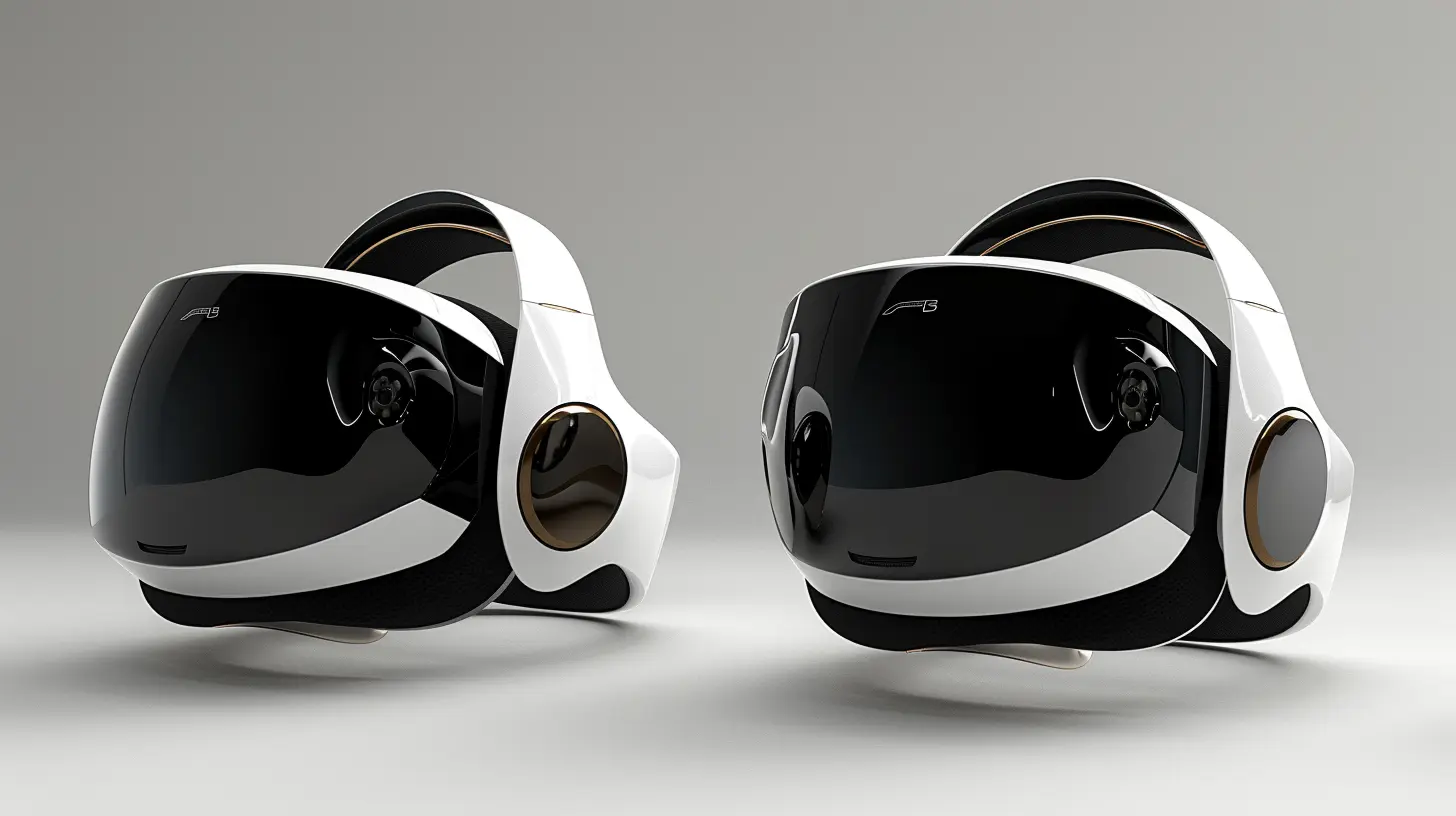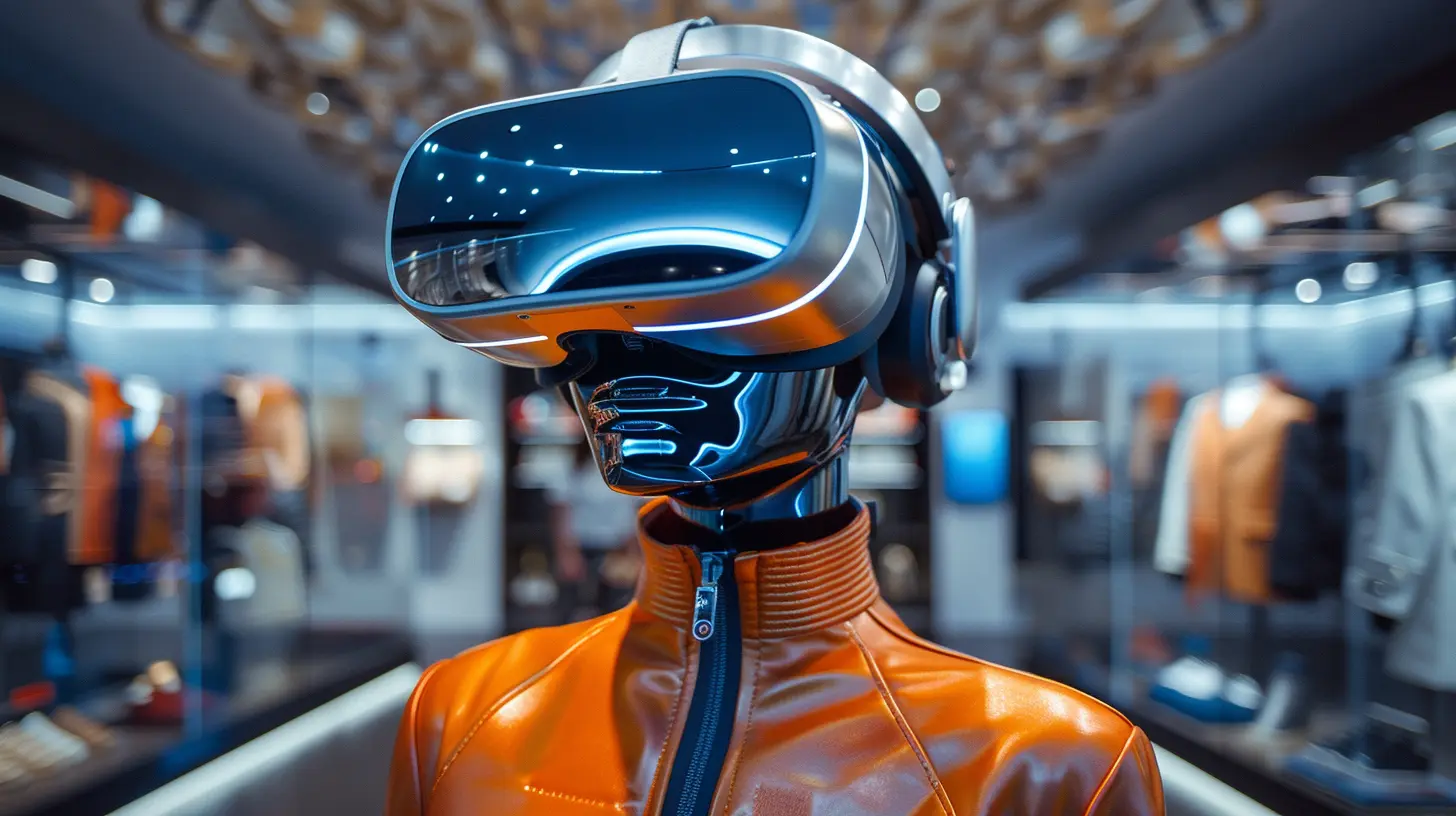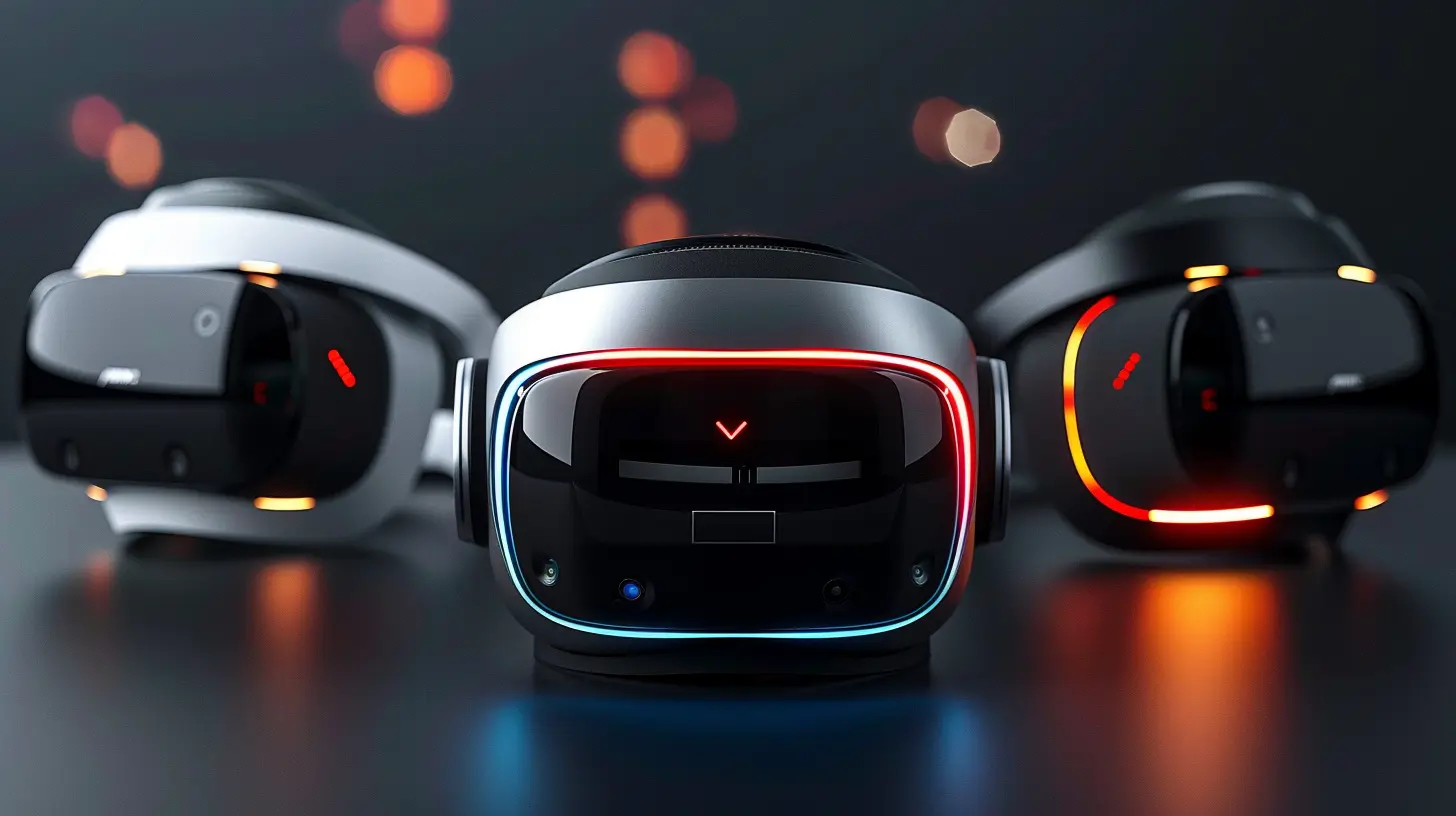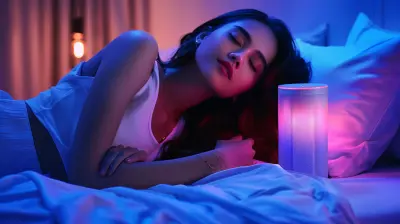The Intersection of Fashion and Functionality in VR Headsets
21 November 2025
Virtual Reality (VR) has come a long way from being a clunky sci-fi fantasy to something you can actually wear on your head and enjoy – no cyberpunk suit required. But as these high-tech toys become more wearable, there's a new wrinkle in the story: they need to look good, too. That’s where the worlds of fashion and functionality collide.
Gone are the days when VR headsets looked like something you borrowed from an alien spaceship. Today, style matters. Users don’t just want immersive experiences — they want headsets that fit into their lifestyle, their aesthetic, and yes, even their Instagram feed.
So, let’s dive deep and unpack the stylish evolution of VR headsets, why good design matters just as much as good tech, and how the industry is tackling the twin challenges of being fabulous and functional.
The Fashion Problem: VR Headsets Aren’t Exactly “Cute” Yet
Let’s start with the obvious. If you’ve ever slipped on a VR headset, you probably noticed two things: 1) it’s amazing, and 2) you look kind of ridiculous.Big. Bulky. Boxy.
VR headsets have historically screamed “function over fashion.” Designed primarily for engineers, gamers, and tech nerds, early headsets didn’t take the average consumer's aesthetic preferences into account.
But here’s the thing — hardware isn’t just hardware anymore. Think of your smartphone. Yes, it needs to work flawlessly, but it also needs to look like something you’d proudly flash in public. VR headsets are joining that same lifestyle tech shift. If you want people to use your product regularly, it can’t just be powerful — it has to be wearable.
Why Fashion Matters in Tech Now More Than Ever
Let’s be real — we live in an age where people judge products by their appearance. Apple basically made a religion out of design, and now every device, from smartwatches to headphones, has to be aesthetically pleasing.The same is happening with virtual reality.
VR isn't confined to your bedroom anymore. It's moving into fitness studios, corporate training rooms, fashion runways (ironically), and even social hangouts like Horizon Worlds or VRChat. And if people are using these gadgets in public or for social interaction, design can't be an afterthought.
Aesthetics now play a critical role in VR adoption. People don't want to strap a toaster to their heads. They want something sleek, lightweight, and Instagrammable.
The Rise of Design-Forward Headsets
Some companies are starting to catch on. We’re finally seeing headsets that look more like something you’d find in an Apple store than a NASA lab.Meta Quest Pro
Meta’s Quest Pro is a solid step toward marrying form and function. Compared to the original Oculus Rift, which looked like a mini microwave on your face, the Quest Pro boasts a sleeker, more contoured design. It’s still not perfect — it's pricey and a bit heavy — but it’s clear they’re thinking about aesthetics now.HTC Vive XR Elite
HTC’s XR Elite ditches the bulky head strap for something closer to high-tech sunglasses. It’s minimalist, modular, and whispers "form factor upgrade," even if you still wouldn’t wear it out to brunch.Apple’s Vision Pro
Leave it to Apple to finally ignite the fashion tech war. Vision Pro is arguably the first headset designed with lifestyle in mind. It’s got curved glass, aluminum frames, and a Digital Crown that feels straight out of a luxury watch. Whether it lives up to the hype tech-wise is still up for debate, but visually? It's already a trendsetter.
Functionality: Why It Can’t Be All About Looks
Of course, we can’t forget why we’re using these things in the first place. A good-looking headset that doesn’t deliver immersive, lag-free VR is just a fancy paperweight.Let’s talk functionality — specifically, the three Fs of VR usability:
1. Fit
If your headset gives you a headache or slides off every time you turn your head, that's a hard pass. Comfort is non-negotiable, especially for longer sessions. Adjustable head straps, padded seals, and proper weight distribution are all essential.2. Field of View
A stylish headset that limits your field of view is like buying a sports car with a dirty windshield. No one wants tunnel vision in the metaverse. Wide field of view (FOV) enhances immersion, and that’s something manufacturers can’t sacrifice for the sake of slim profiles.3. Functionality Features
From eye-tracking to passthrough cameras to spatial audio — modern VR needs to pack a punch. Features like these are what make experiences feel real. But more tech means more hardware, which can lead to more bulk. That’s the balancing act.The Battle of Style vs. Substance: Can We Have Both?
Here’s the million-dollar question: Can VR headsets be both fashionable and functional?The short answer is: yes — but it’s not easy.
Designing a headset that performs like a beast and wears like a crown is tough. Add to that the challenge of fitting powerful processors, cooling systems, sensors, and high-resolution displays into a lightweight, stylish shell? It's a tech engineer’s worst nightmare and a designer’s dream job.
We’re not quite there yet. Most headsets still lean a little too hard in one direction — they're either heavy on features and clunky on design, or very sleek but a bit underpowered.
But innovation is moving fast.
Fashion-Tech Collaborations: A Sneak Peek of the Future
The future of VR design might not be in Silicon Valley alone — but at the intersection of 5th Avenue and Rodeo Drive. Fashion brands are starting to collaborate with tech companies, and it’s opening doors to a whole new kind of wearable tech.Case in Point: Prada x Meta? Gucci x HTC?
Okay, so those brands haven’t teamed up yet — but don’t be shocked if they do. Luxury brands are already dipping their toes into wearables (remember the Louis Vuitton smartwatch?), and VR could be next. Imagine a limited-edition Gucci faceplate for your Meta Quest, or a Prada-designed strap system. It's all very possible.Why would this matter? Because fashion makes tech aspirational. When people want to be seen with your product, you’ve already won half the battle.
Inclusivity and Expression: The Social Side of Design
Here's another angle you might not think about right away: self-expression.In virtual spaces, identity is everything. We stylize our avatars, our usernames, our virtual environments — so why not our headsets? Just like sneakers or smartwatches, VR headsets could become fashion statements. Think swappable covers, customizable colors, or even artist collabs.
Also, accessibility plays into this conversation. Different head shapes, hairstyles, glasses, and even cultural preferences (like head coverings) all influence whether someone feels comfortable using a headset. A good design needs to be one-size-fits-all without being bland or generic.
How VR Headset Design Impacts Market Adoption
Let’s bring it back to a business perspective.The VR market is still young, and adoption is far from mainstream. A big reason? User friction. If the headset feels awkward, looks weird, or doesn’t fit comfortably — that’s a blocker.
Compare it to the wearables market. Smartwatches didn’t take off until they became sleek, stylish, and gender-inclusive. If VR wants to reach Apple Watch levels of ubiquity, it has to go beyond specs and tick the lifestyle boxes too.
The next wave of growth in VR isn’t just about better processors — it’s about better product design. Period.
Fashion and Functionality Aren’t Opposites Anymore
Once upon a time, fashion and functionality were mortal enemies. Now? They’re business partners.Design is functionality. A headset that fits well, looks good, and makes the user feel confident improves the overall experience — even before the screen lights up. That’s the power of great design.
And in a world where technology is wearable and experiences are shared online, that intersection of fashion and functionality isn’t optional. It’s essential.
So, What’s Next?
Looking ahead, here’s what we can expect:- Sleeker, lighter VR headsets with luxury design cues.
- Collaborations between tech and fashion brands.
- More personalization and customization options.
- Improved fit and ergonomics for all users.
- More aesthetically pleasing accessories (charging docks, carrying cases, etc.)
The real magic will happen when you can throw on a VR headset like a pair of sunglasses — stylish, snug, and socially acceptable.
Until then, we’ll be watching (and maybe judging a little) as the industry finds its fashion-forward footing.
Final Thoughts
VR headsets are on the cusp of a design revolution. We've nailed down functionality to a good extent, and now it's time for these devices to look as good as they perform. The sweet spot? Seamlessly blending fashion and functionality.Sure, we’re not quite there yet — but the shift is already happening. And when we finally hit that perfect balance? The metaverse won’t just be immersive. It’ll be stylish.
all images in this post were generated using AI tools
Category:
Vr HeadsetsAuthor:

Jerry Graham
Discussion
rate this article
2 comments
Jamie McGrath
While style is essential, true innovation lies in balancing fashion with functionality. VR headsets should not only look sleek but also enhance user experience. In a world where form meets purpose, optimal design will define the next wave of immersive tech.
November 25, 2025 at 4:17 AM

Jerry Graham
Absolutely! Balancing aesthetics with usability is key to advancing VR headset design and enhancing the overall user experience.
Jack Jackson
This article brilliantly highlights how VR headsets are evolving beyond mere functionality to embrace fashion. As technology advances, the fusion of style and practicality will play a crucial role in user adoption, making VR a more appealing choice for everyday use.
November 22, 2025 at 10:51 PM


